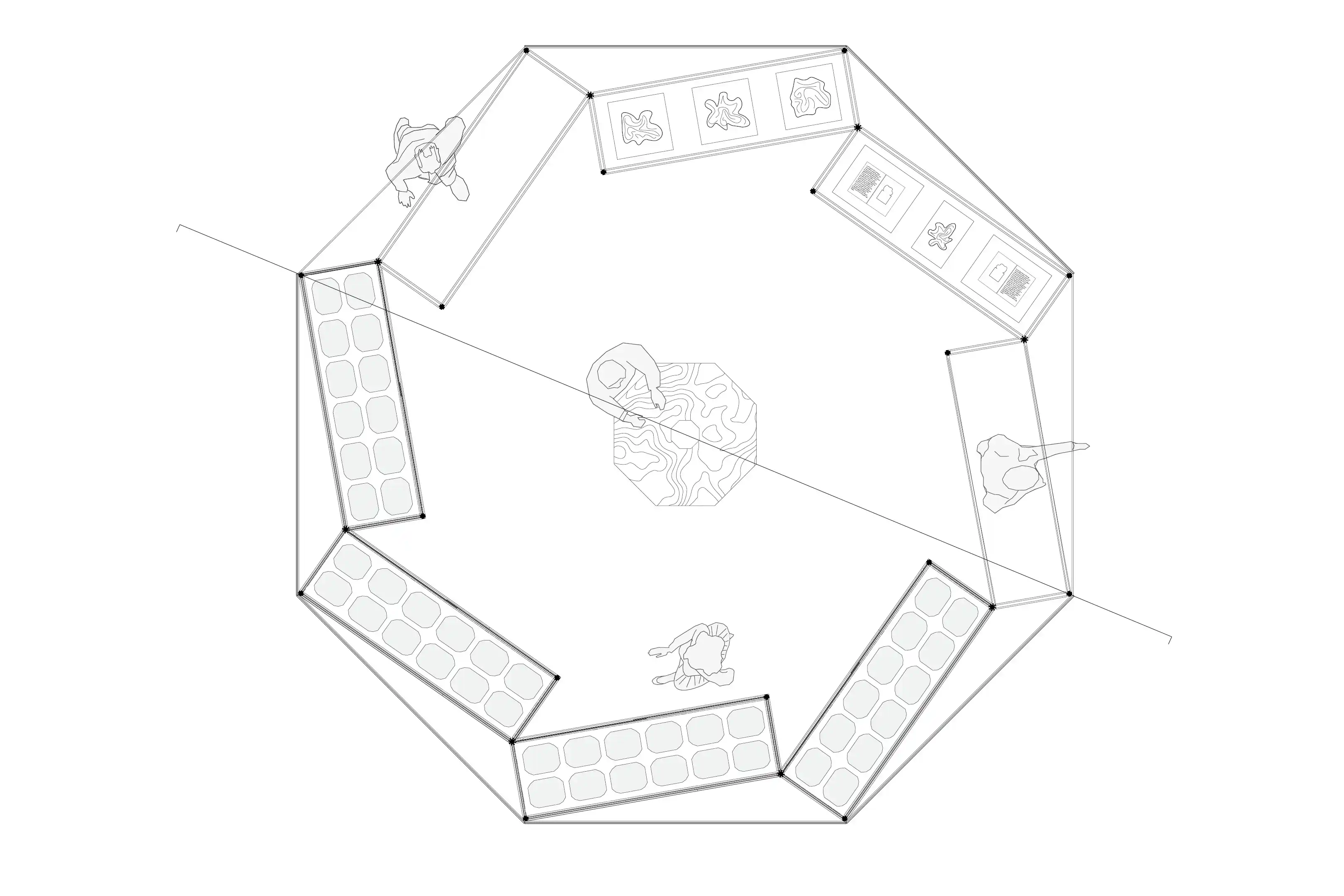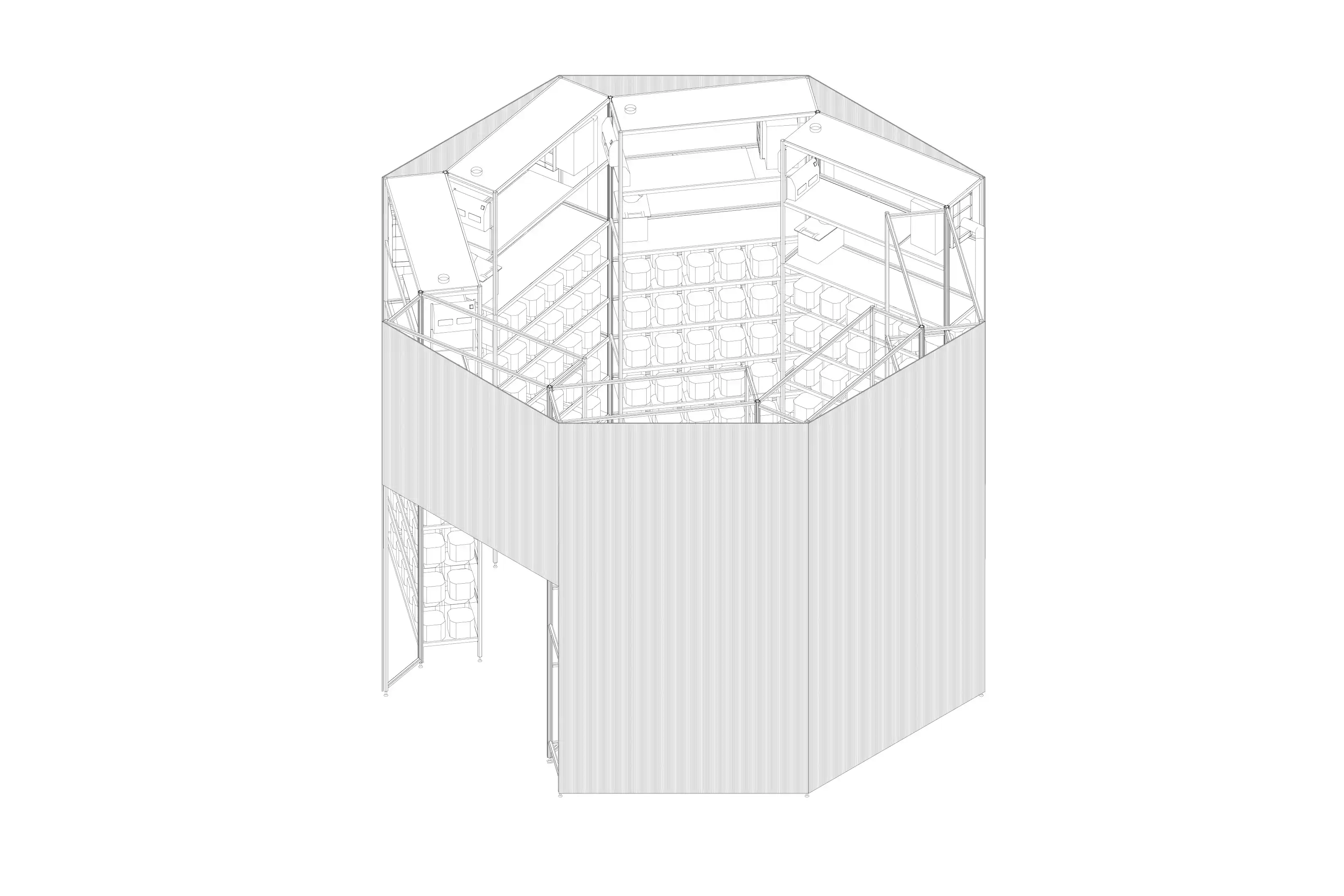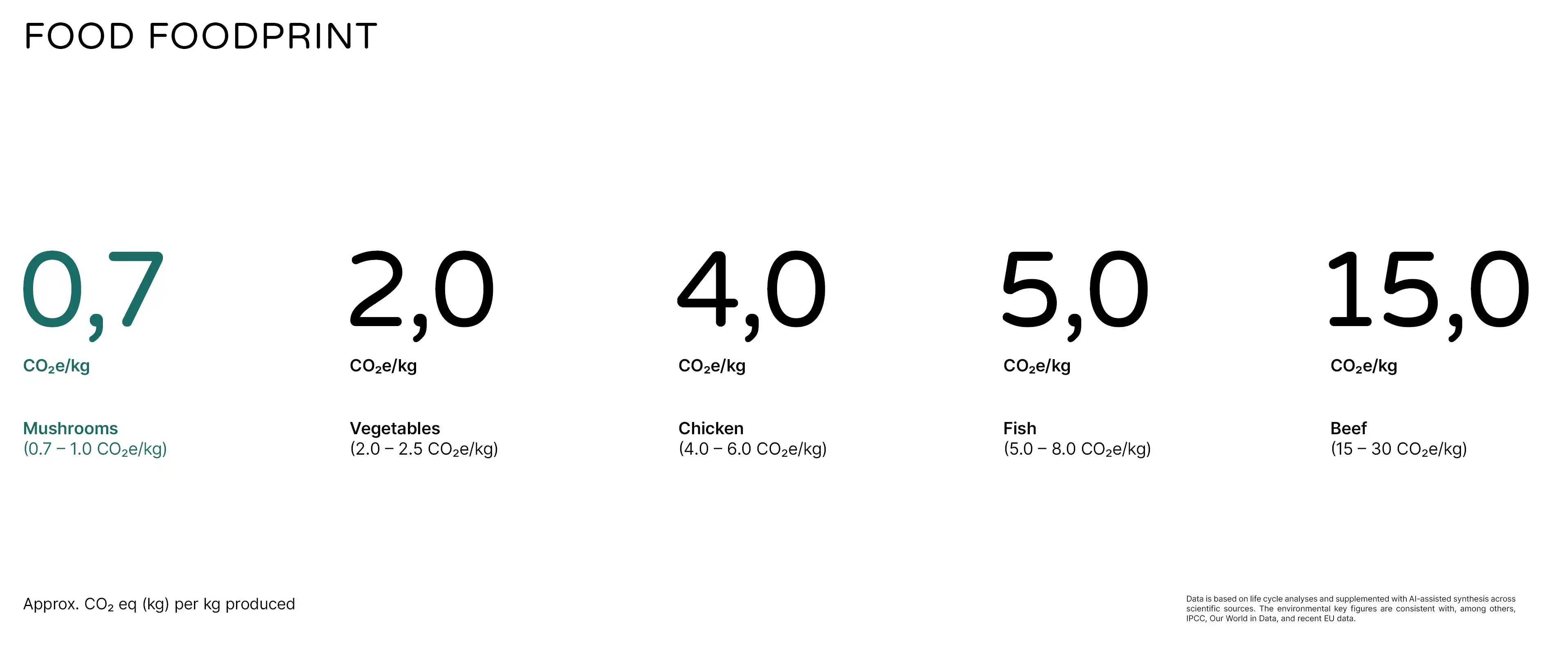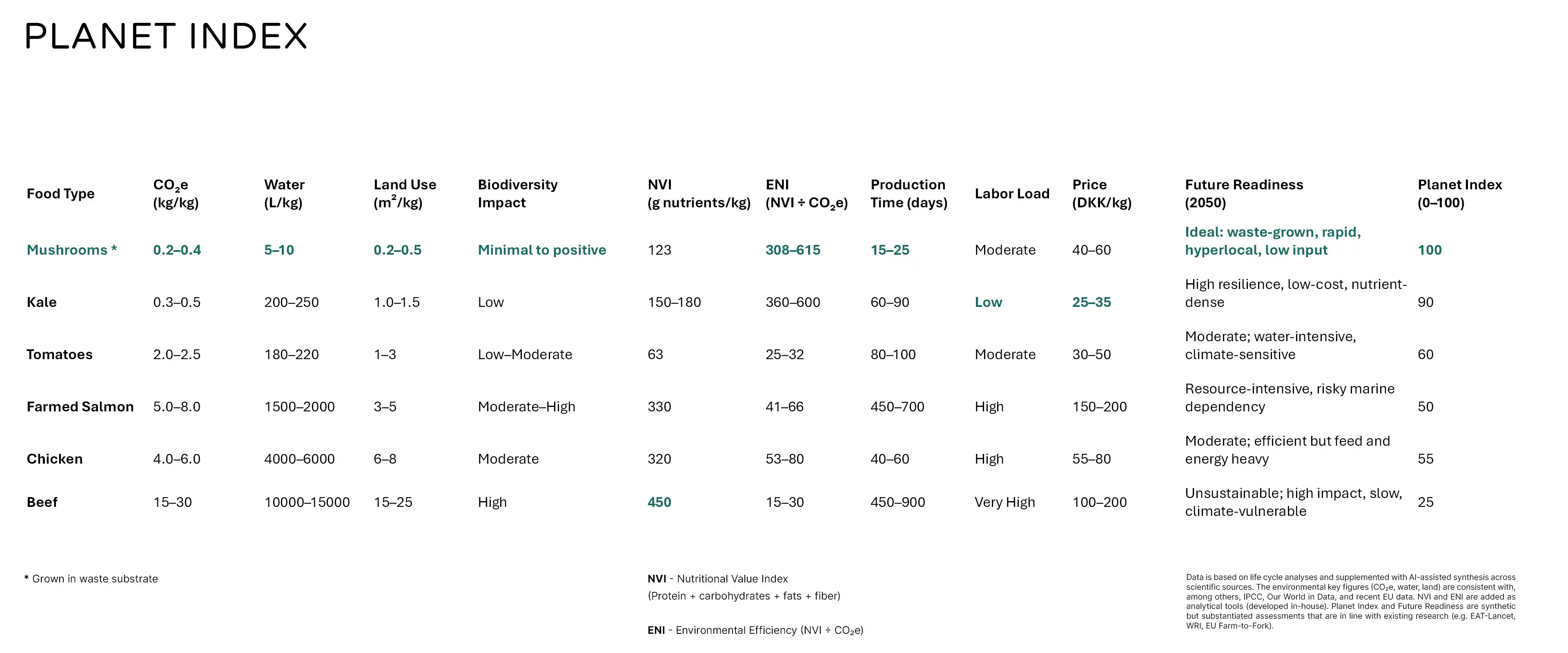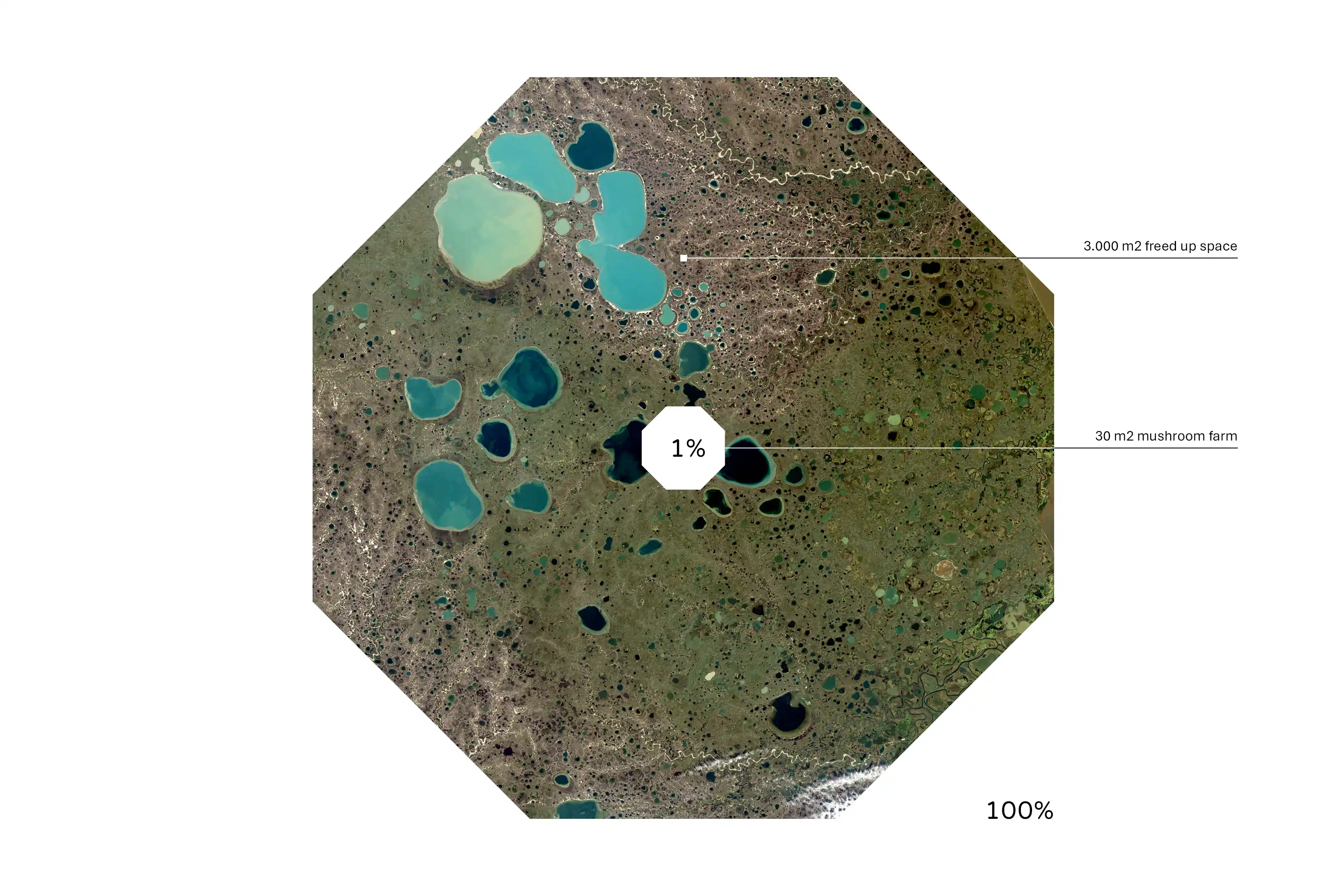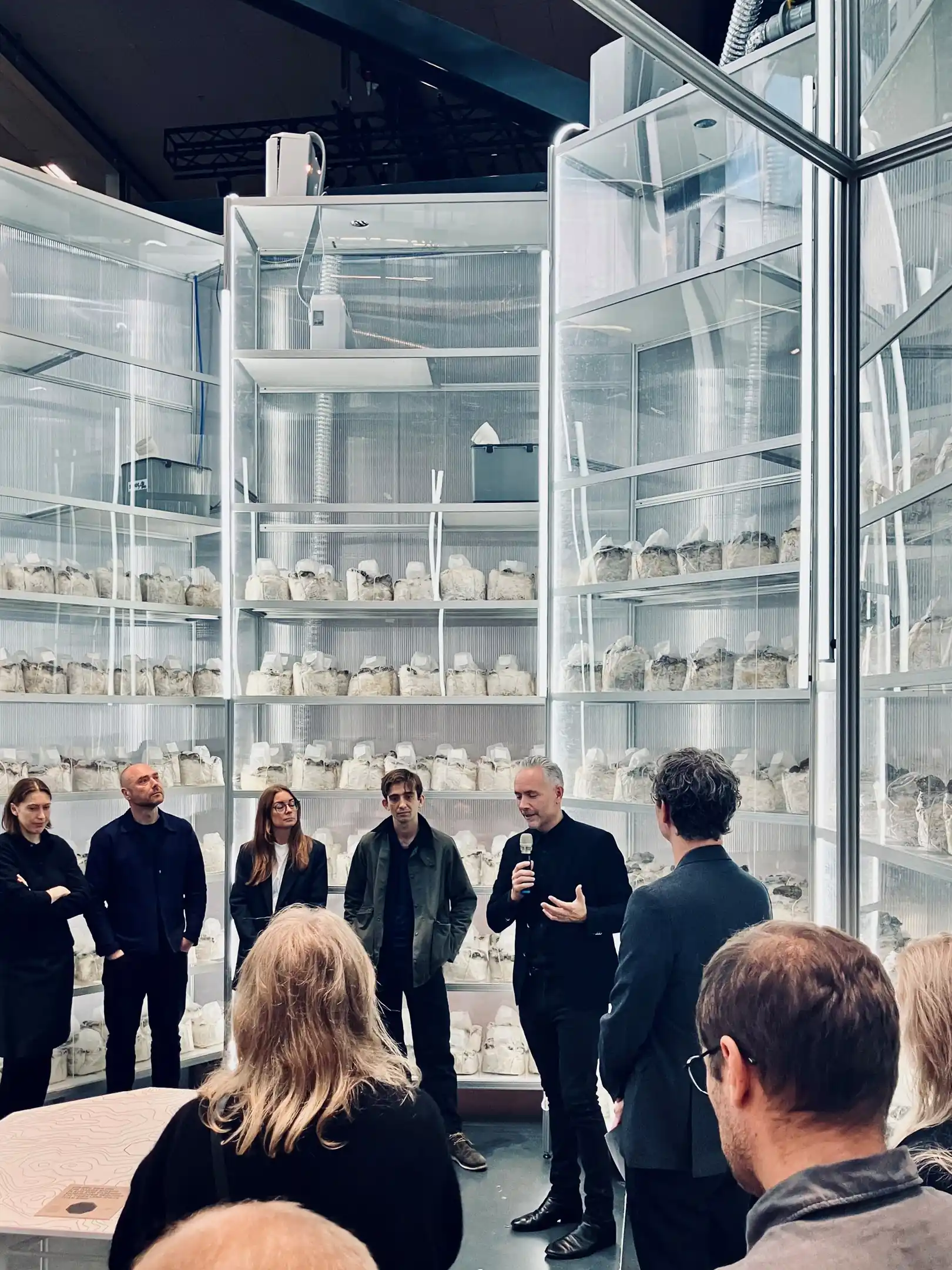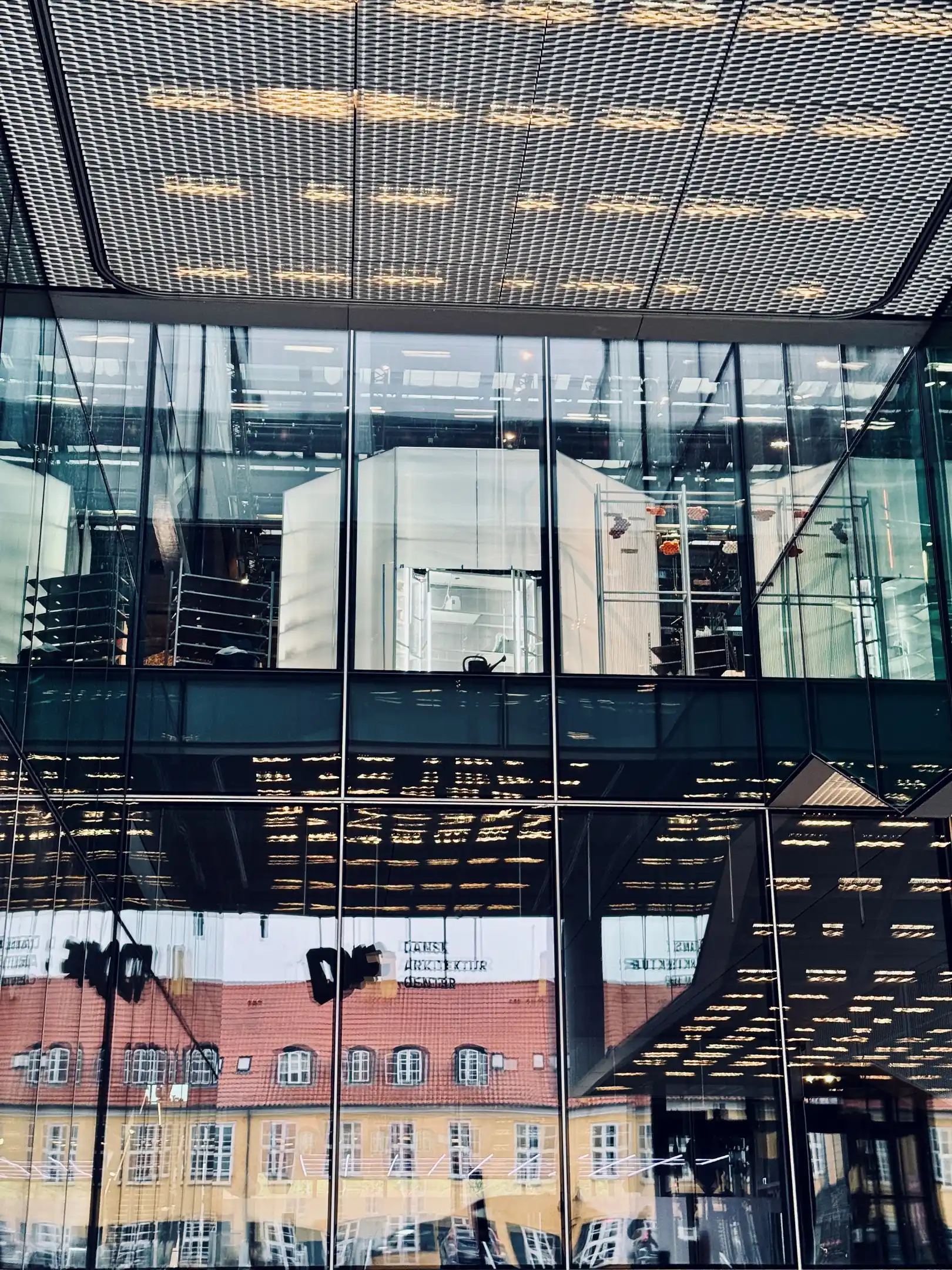Habitat 25 demonstrates how cities can become productive ecologies by integrating food cultivation directly into their spatial and cultural infrastructure. Over just 30 m², the installation produces hundreds of kilos of Grifola Frondosa (maitake), a rare and nutrient-rich mushroom. Compared to traditional beef production, the same nutritional output would require over 100 times more land. By relocating food production to urban environments, we release vast areas in the countryside for rewilding, biodiversity and ecosystem restoration.
The mushroom chamber is constructed as a ‘circular hack’ of the Danish Architecture Center’s own modular exhibition system, wrapped in translucent membranes and climate-controlled to support continuous, zero-waste production. Using upcycled organic waste such as coffee grounds and sawdust as growing substrate, the installation illustrates how architecture can transform waste into nourishment and embody the future of urban metabolism.
.svg)
.svg)


.svg)
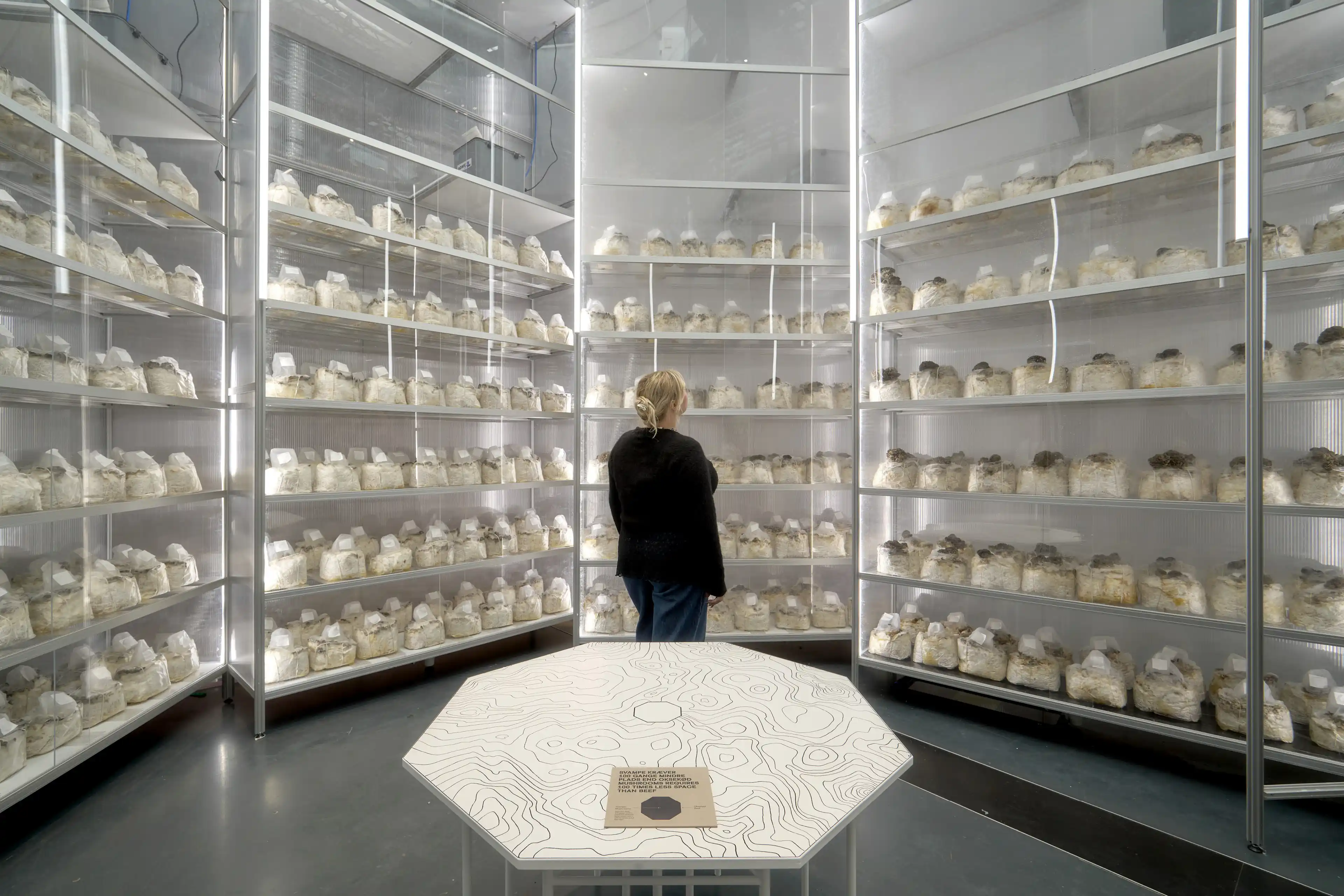
.svg)
.svg)





